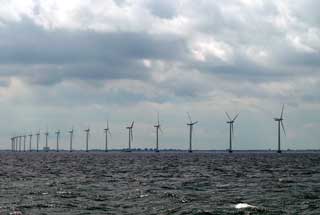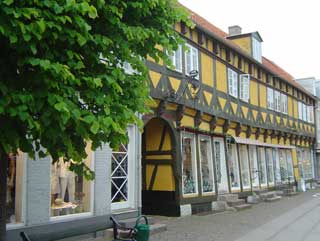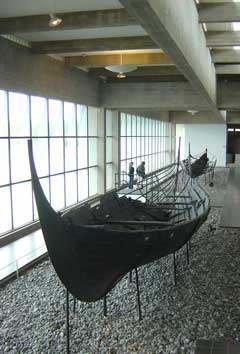Helsingør to Køge
Sunday 5th June
 After
two days cowering from a near gale in the Kattegat, we opted to turn tail
and head back south via the Sound, rather than make our way in the exposed
seas to the north of Seeland. Although the forecast was for force four
from the west, even the short five mile fetch made for an uncomfortable
beam sea. The Baltic was proving a tricky sea to navigate as despite the
popular belief that there are no tides, we were finding significant wind-driven
currents which were impossible to predict.
After
two days cowering from a near gale in the Kattegat, we opted to turn tail
and head back south via the Sound, rather than make our way in the exposed
seas to the north of Seeland. Although the forecast was for force four
from the west, even the short five mile fetch made for an uncomfortable
beam sea. The Baltic was proving a tricky sea to navigate as despite the
popular belief that there are no tides, we were finding significant wind-driven
currents which were impossible to predict.
 On
this trip we could skirt east of Copenhagen's Middelgrund windfarm, a
significant feature on the landscape which, together with other renewable
energy sources, contributes 13% of the country's total energy consumption.
We took the Hollænder Dyb channel due south before turning west
at Dragor fort into the Køge Bucht.
On
this trip we could skirt east of Copenhagen's Middelgrund windfarm, a
significant feature on the landscape which, together with other renewable
energy sources, contributes 13% of the country's total energy consumption.
We took the Hollænder Dyb channel due south before turning west
at Dragor fort into the Køge Bucht.
The harbour at Køge's Lystbaadehavn has been augmented by four new marinas which stretch along the popular sandy beach. Although the nearest to the town, it is still a good mile away and even the walk to the harbour office could wear you out. On site, a shop, kiosk, chandlery and restaurant provide for immediate needs and a cycle path leads from the boat storage area to the town. Famous for its ancient half-timbered buildings, Køge's main street boasts an array of interesting shops as well as the obligatory town museum (closed Mondays).
 Yet
another day of high winds made an ideal lay day to take the 30 minute
train ride to Roskilde for a visit to the Viking Ship Museum (www.vikingshipmuseum.com).
Once the seat of the Royal Family and the burial place of several generations
of Danish monarchs, Roskilde is strategically situated at the site of
a natural spring and at the head of a defensible fjord. It was these 11th
century defences, formed by the sinking of defunct ships in the main channel,
that were recovered in an intricate archeological project that began in
the 1960's and took more than 25 years to complete. Today, as well as
the preserved remains, the museum is home to accurate reconstructions
of each vessel. Built using traditional tools, techniques and materials
these range from an 11 metre fishing boat to a 30 metre longship built
in Dublin as an ocean-going warship.
Yet
another day of high winds made an ideal lay day to take the 30 minute
train ride to Roskilde for a visit to the Viking Ship Museum (www.vikingshipmuseum.com).
Once the seat of the Royal Family and the burial place of several generations
of Danish monarchs, Roskilde is strategically situated at the site of
a natural spring and at the head of a defensible fjord. It was these 11th
century defences, formed by the sinking of defunct ships in the main channel,
that were recovered in an intricate archeological project that began in
the 1960's and took more than 25 years to complete. Today, as well as
the preserved remains, the museum is home to accurate reconstructions
of each vessel. Built using traditional tools, techniques and materials
these range from an 11 metre fishing boat to a 30 metre longship built
in Dublin as an ocean-going warship.
Cruising Statistics
Distance: 48 nm
Total to date: 913 nm
Avg Speed: 6 knots
Duration: 8 hours
Diesel: 40 litres
Wind: W-SW 4
Mooring: Kr.100/night
Electricity: Included
Water: Included
Charts
NV Serie 3 - S26
NV Serie 2 - S21
S23